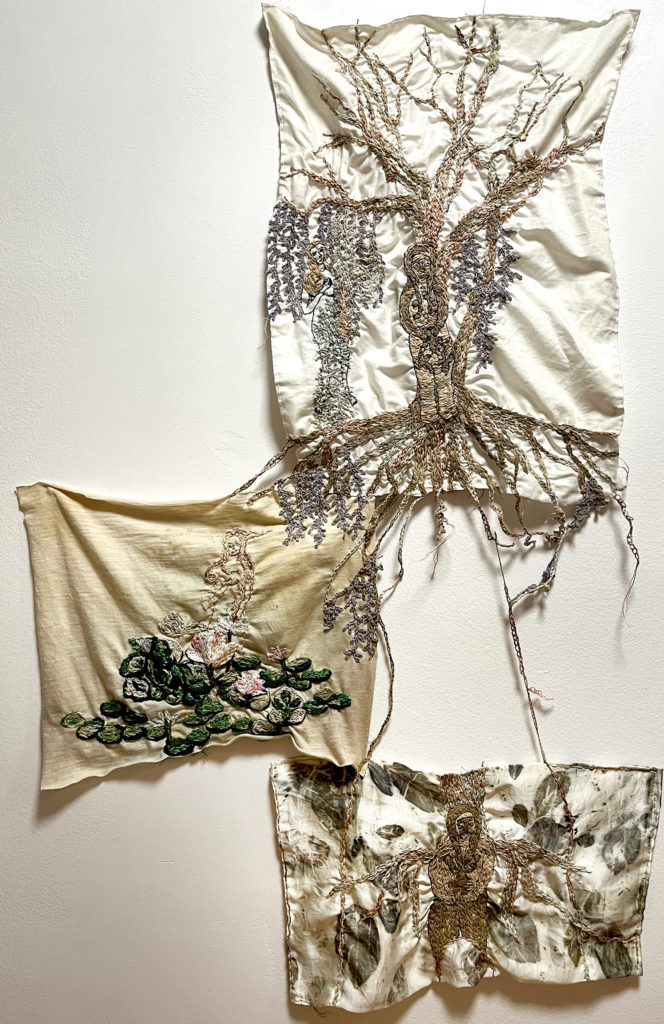
Stitchcraft
Stitchcraft envisions a future where women and people with wombs, plants and the natural world are honored rather than politically weaponized. By reviving and centering “women’s” traditional textile handcrafts, oral narratives and plant-based knowledge, we can create self and community advocacy and care.
Stitchcraft includes bi-monthly, virtual embroidery circles, where we gather to share and receive feedback on craft projects; learn new embroidery techniques; and discuss an open-ended range of ideas, which subsequently feed our craft projects. Stitchcraft also includes a study of women’s herbalism through consultation with culturally diverse herbalists, reading and research, including Ashkenazi Herbalism by Deatra Cohen and Adam Siegel, The Art & Practice of Spiritual Herbalism by Karen M. Rose, and numerous scientific and historic articles.
In spring 2023, Stitchcraft launched a reproductive health garden at Old Stone House (OSH) & Washington Park, Brooklyn in consultation with herbalist Danielle Moore and Director of Gardens Sam Lewis. The garden includes Paeonia lactiflora (Chinese peony), Vitex agnus-castus (chaste tree), Cimicifuga racemosa (black cohosh), and Verbena hastata (blue vervain), all with histories of aiding hormonal cycles to restore balance and alleviate menstrual discomfort. These herbs have histories and current uses of helping womb-bearers at all stages of life, including peri-menopause and menopause.
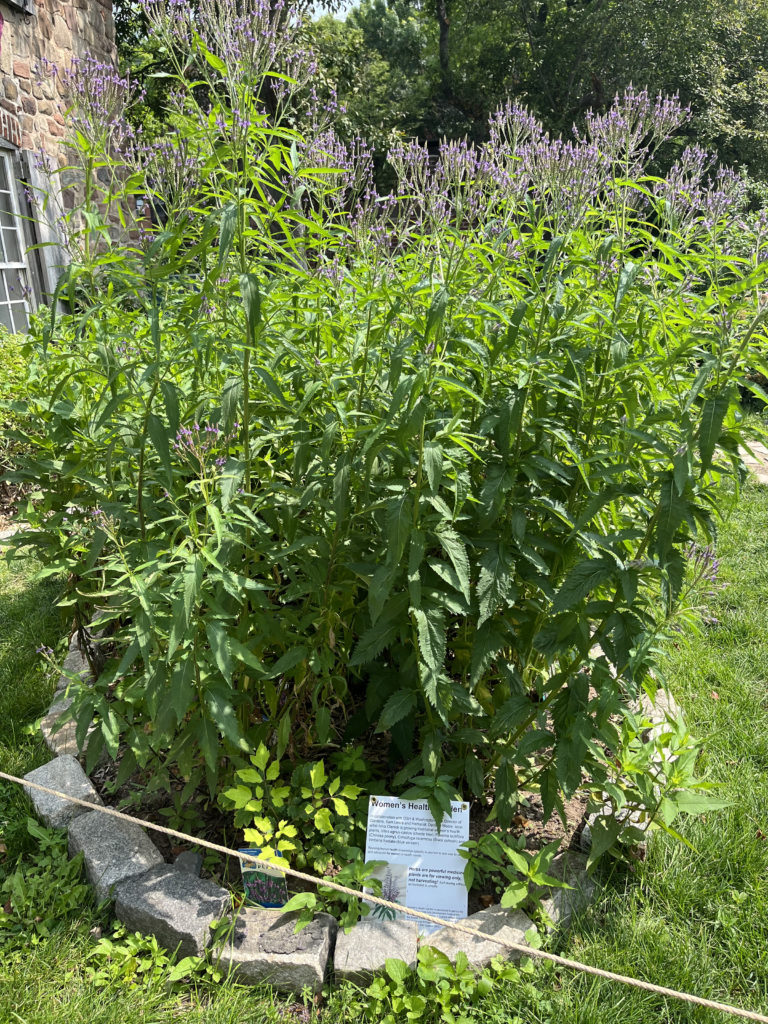
My Stitchcraft artworks below are life-sized embroideries of women’s bodies, replacing reproductive organs with plants historically used to induce menstruation. Some artworks include female archetypes from pre-history along with mythologized plants, suggesting that humans’ sense of mystery and attempts to master the natural world often mirror attitudes towards female bodies.
My artworks often start with a base layer of natural dyes and/or plant imprints. I use a jewelry mallet to pound leaves and flowers onto fabrics. Plants include ones I responsibly forage—purple leaf sand cherry tree leaves, acorns, rose petals—and ones I cultivate, marigolds, indigo leaves, woad seeds. I then layer seed beads, embroidery stitches—French knots, chain stitch, satin stitch, backstitch—crochet and weaving onto plant prints. The resulting wall-hung textiles undulate and reverberate, creating movement rather than lying flat like conventional drawings or paintings.
Myths of Plants and Women from (Pre)History. 2023. Embroidery on fabric with plant prints and dyes (rose petals, avocado pits, indigo, purple leaf sandcherry tree leaves); handgrown and spun cotton thread; linen thread dyed with avocado, indigo, goldenrod, sumac, woad seeds, purple leaf sandcherry tree leaves, onion skins, rust and commercially dyed threads.
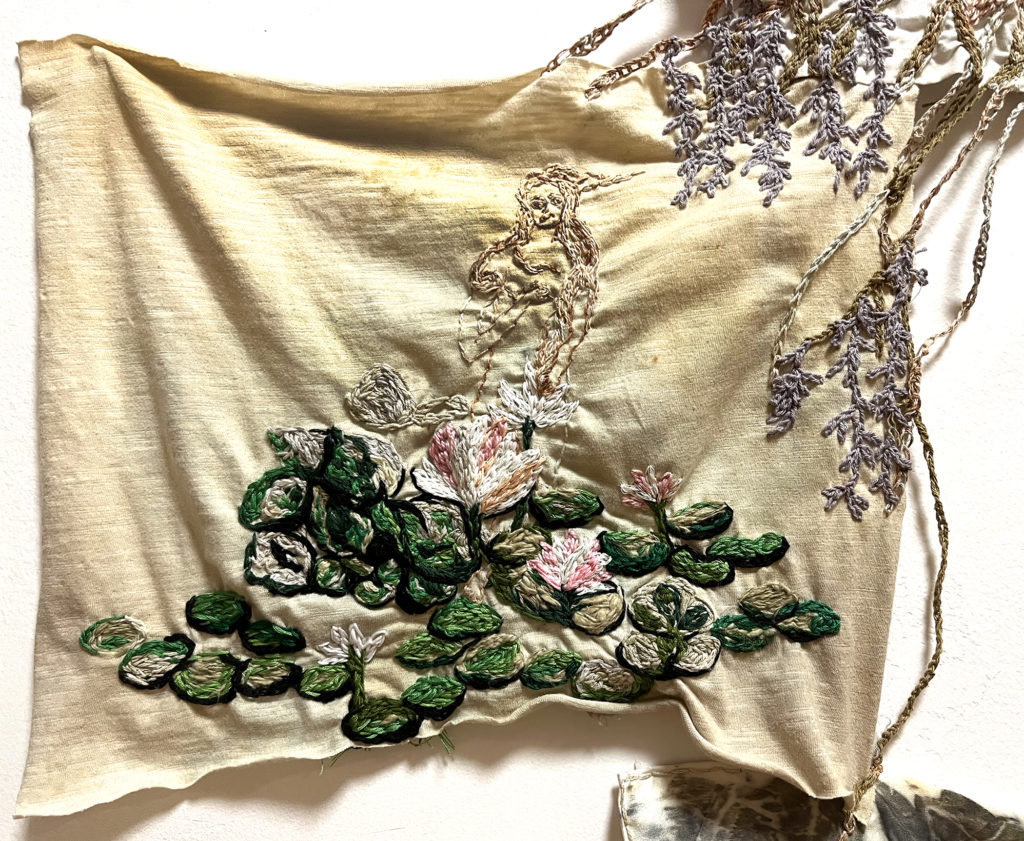
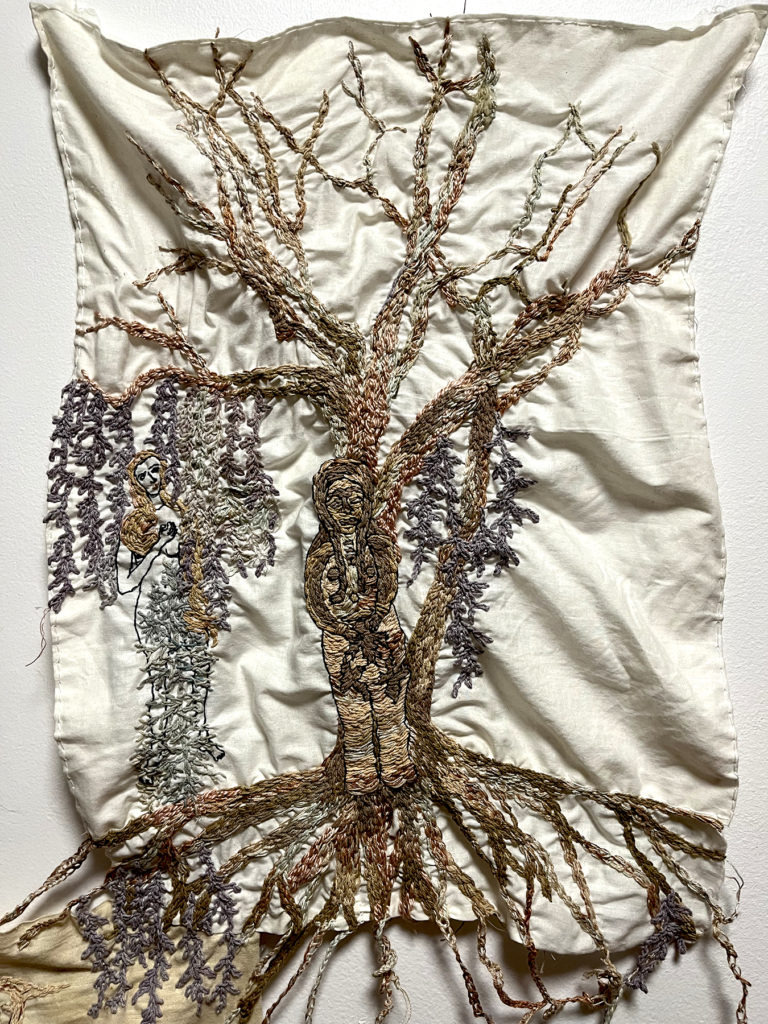
2023. Embroidery with naturally dyed yarns and fabrics.
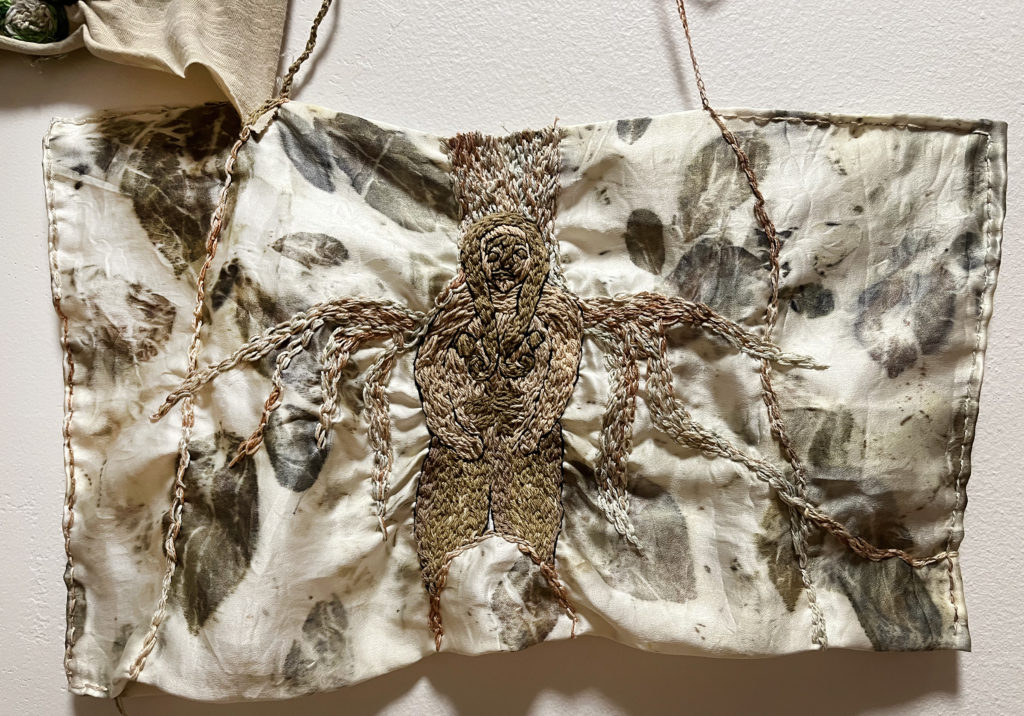
2023. Embroidery with naturally dyed threads on plant-printed silk fabric.
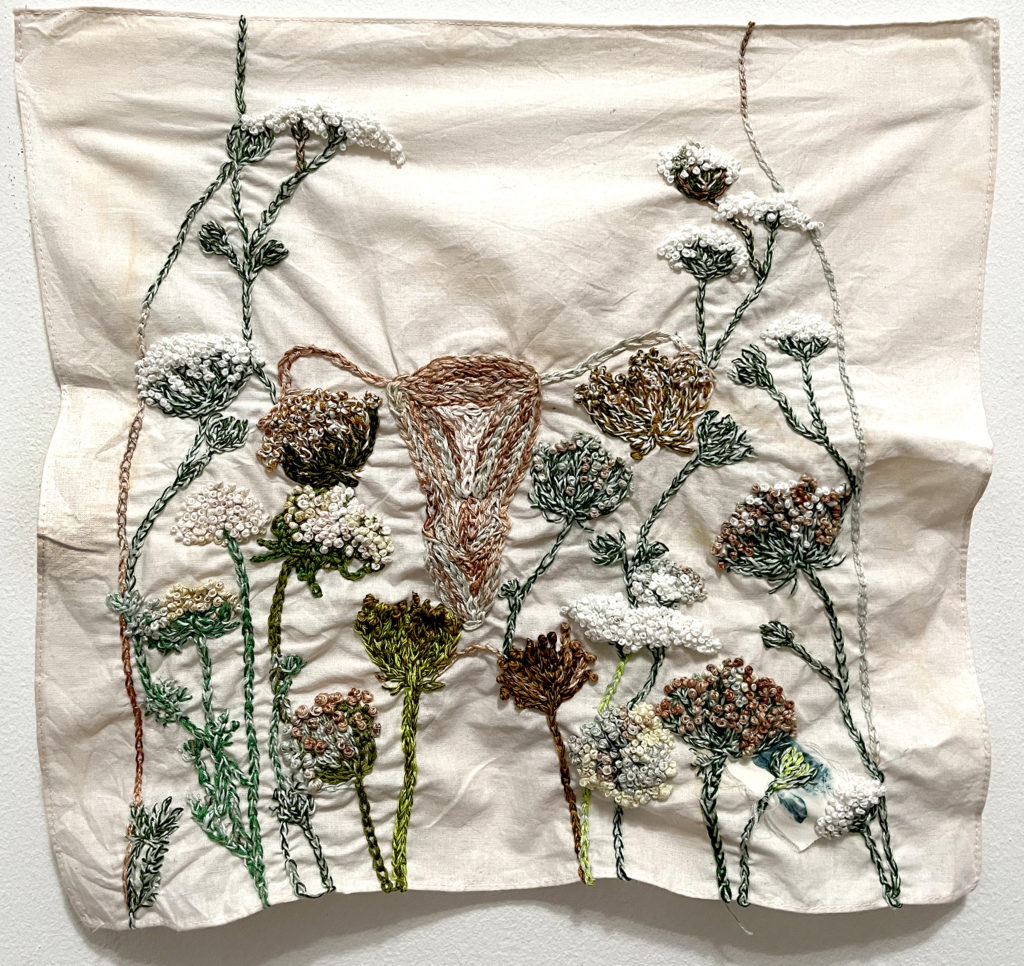
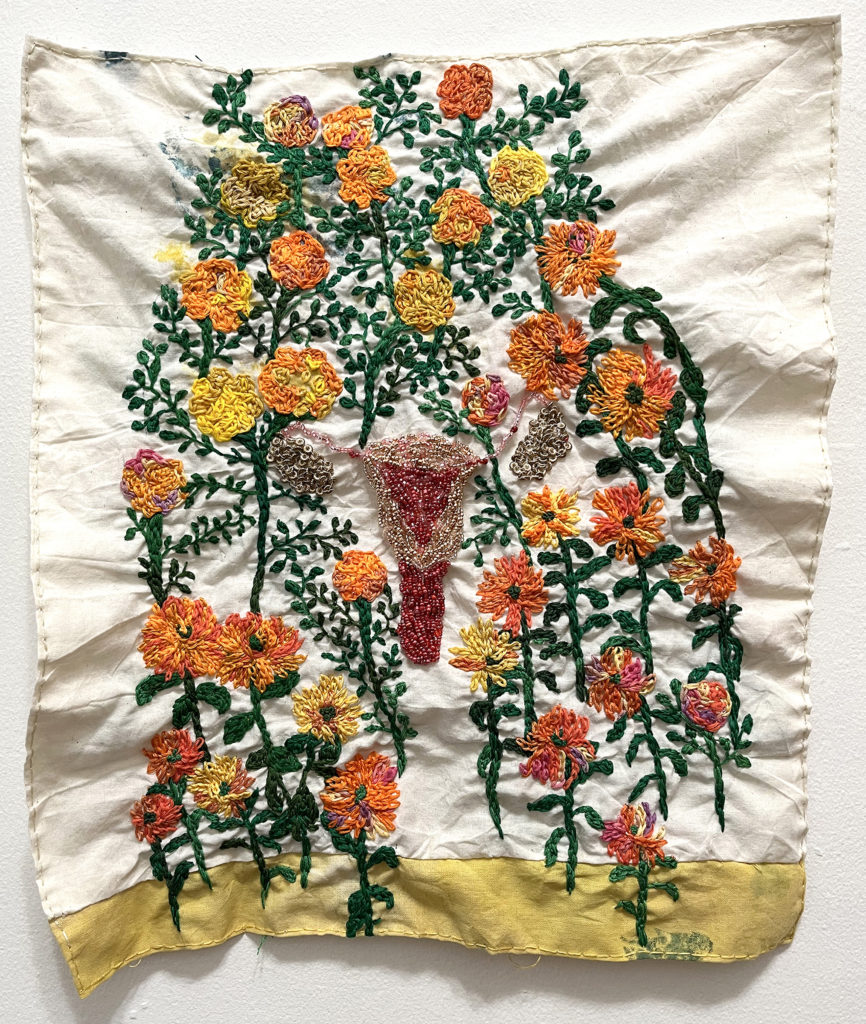
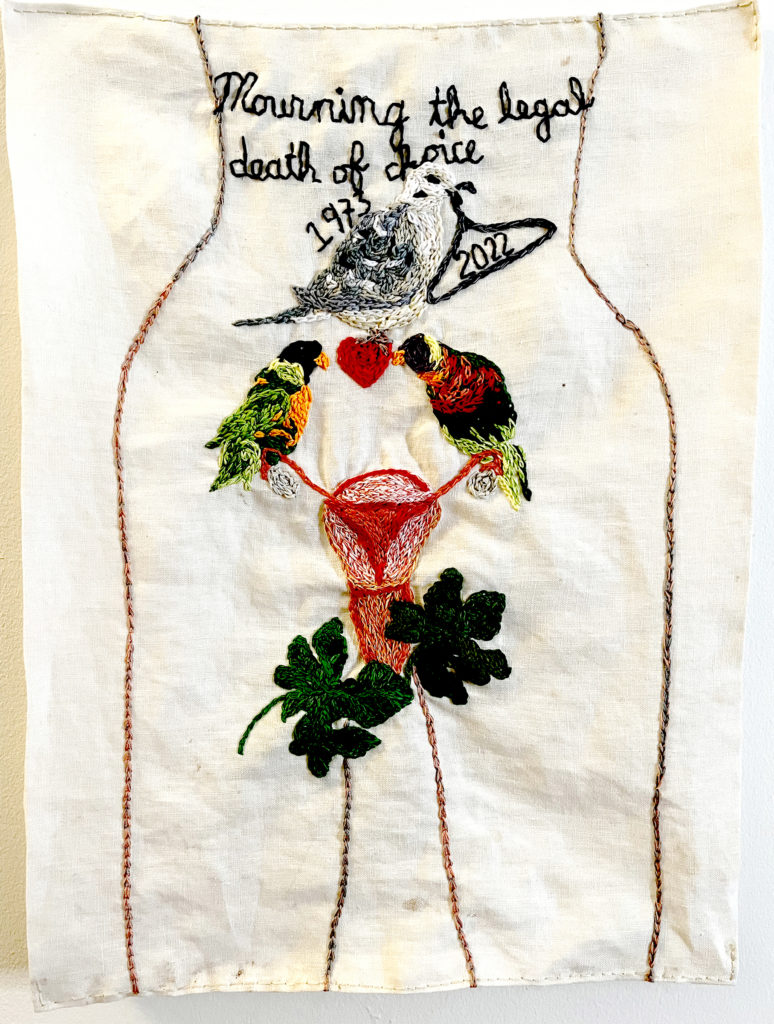
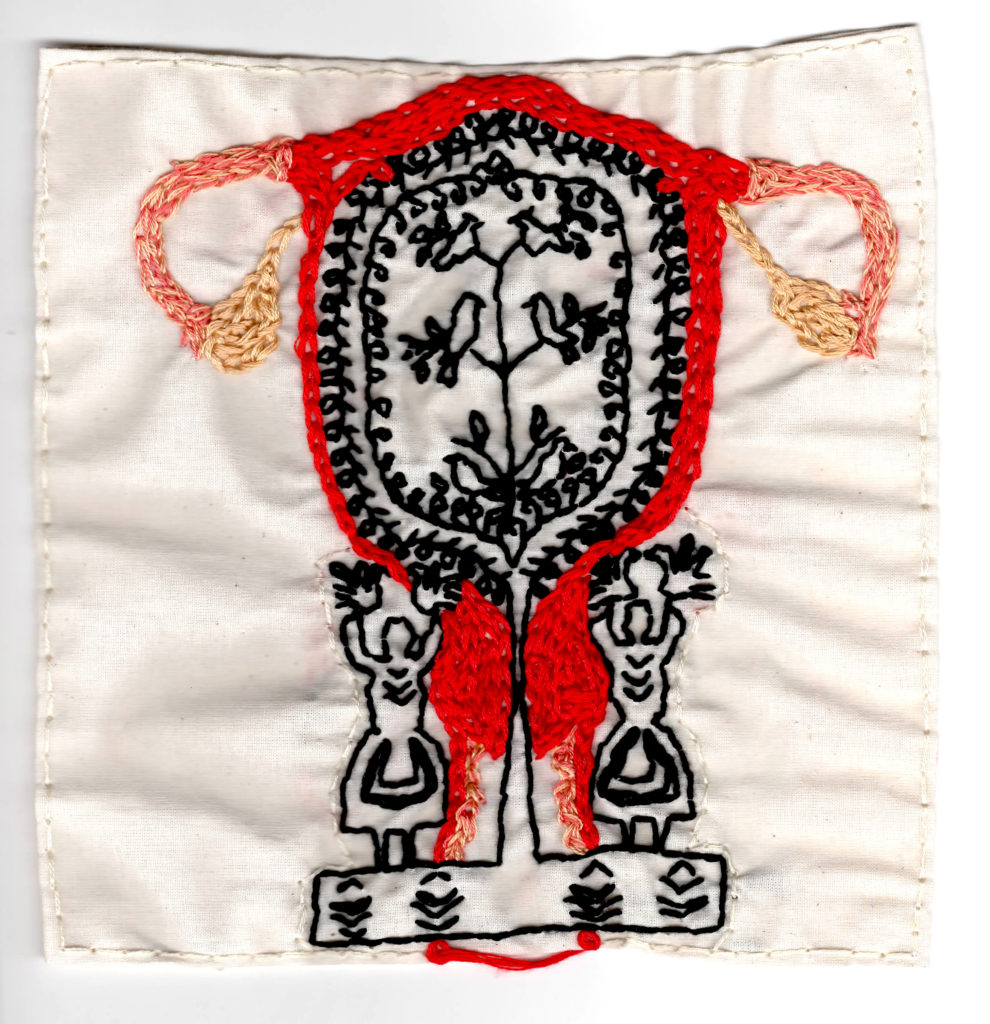
Embroidery on fabric. 7.5 x 7.25 inches. B&W pattern inspired by Polish folk art.